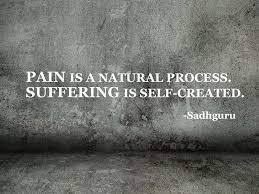Self-Created Suffering

I am stealing the title of Chapter 9 in “The Art of Happiness” by HH The Dalai Lama for the recap of our Summer Book read this week. There is no better way to reiterate the fact that though it is easier to look at others and outsiders for the source of our own suffering, the hard truth is that we create a lot of our own. Even more difficult is coming to terms with the fact that suffering “can add drama and a certain excitement to our lives or elicit attention and sympathy from others”. Are we willing to shed the drama and the excitement to end our own suffering and move toward a happier existence? Are we willing to change?
There are a few things that the Dalai Lama and Dr. Cutler highlight as ways we self-create our suffering:
- Personalization of pain. A quote they use from a concentration camp survivor helps to describe this…“Unhappiness, I saw then, comes to each of us because we think ourselves at the center of the world, because we have the miserable conviction that we alone suffer to the point of unbearable intensity. Unhappiness is always to feel oneself imprisoned in one’s own skin, in one’s own brain.” (Jacques Lusseyran)
- Unfairness. Looking at the world as having to be fair is like looking at life as being eternally pain-free and pleasant. The last chapter made clear that this kind of thinking sets us up for disappointment and feelings of helplessness and victimization. However, in directly addressing an issue or problem and actively finding solutions is much more productive and in line with working through Karma than passive acquiescence. Yes, it takes more time and attention, we have to take responsibility for looking at every situation from many angles, but it empowers us instead of diminishing us.
- Guilt. “As products of an imperfect world, all of us are imperfect. Every one of us has done some wrong. There are things we regret…But if we allow our regret to degenerate into excessive guilt, holding on to the memory of our past transgressions with continued self-blame and self-hatred, this serves no purpose other than to be a relentless source of self-punishment and self-induced suffering.” As with so many other emotions, the key is to have it be there, experience it, but don’t let it consume you, and ultimately let it go.
- Resistance to Change. Everything changes in the world. All of nature is transient. Part of nature are our reactions and feelings, so they also are transient. Self-created suffering happens when we resist this notion that ALL THINGS CHANGE. We believe our pain must be permanent, the mistake we made must be permanent, or a problem must be permanent. However, to embrace change is to realize that even the worst feeling will pass sooner or later. “This too shall pass”…but maybe just not as quickly as we would like.
Even more so, we have to look at change in a positive light in all aspects of our life! From watching ourselves age or watching our kids grow up and become independent, to experiencing the changes in a long-term relationship or experiencing deaths of loved ones along with our own impending end.
“Life is change. And to the degree that we refuse to accept this fact and resist the natural life changes, we will continue to perpetuate our own suffering.”
“The Art of Happiness” – Chapter 9 – Resisting Change